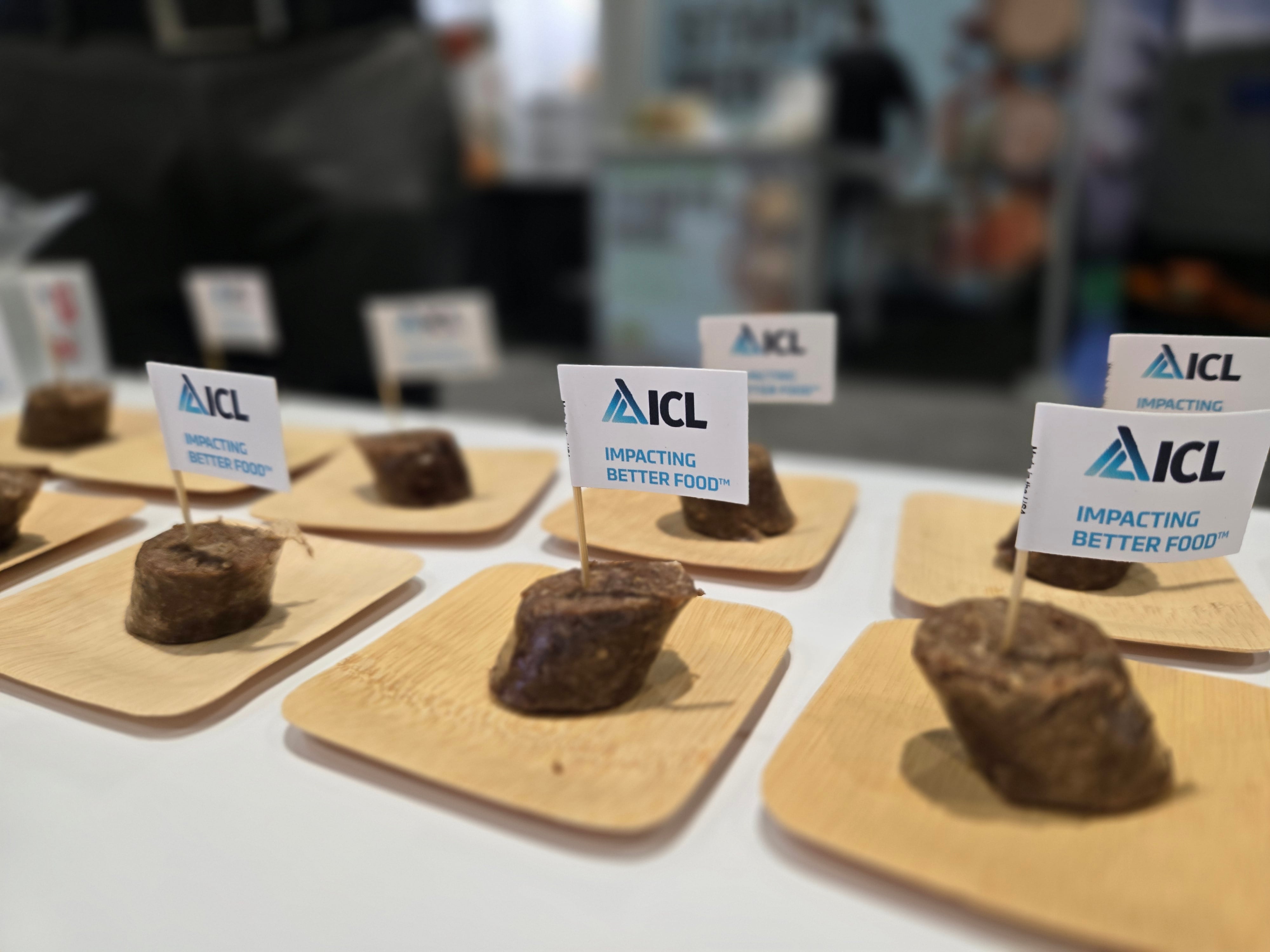Consumers are wising up to the downsides of the popular plant-based meat binder methylcellulose, which has a reputation as a highly-processed ingredient and is a fiber laxative, but which food ingredient specialist ICL says has been difficult to replace without sacrificing taste, texture and performance – until now.
“Methylcellulose acts like a binder. It is a great product. It is very functional, but it also has a lot of negatives to it, and consumers are getting much smarter about reading labels and requiring our developers and innovators give them something that is healthy and nutritional,” Allison Fayfich, food specialties sales at ICL Food Specialties, told attendees gathered at IFT’s Food Improved by Research, Science and Technology (FIRST) conference in Chicago earlier this month.
ICL’s answer: Rovitaris Binding Solution powered by Rubi Protein, which Fayfich says not only outperforms methylcellulose in hot and cold applications, but also is clean label, adds nutritional value and is sustainably produced.
A clean-label solution
The system combines pea starch, psyllium husk and citrus fiber with the star ingredient Rubi Protein, which is made from the protein RuBisCo sourced from lemna leaf – or duckweed – by Plantible Foods and simply labeled as ‘lemna leaf protein.’
The short list of easy-to-pronounce and familiar ingredients means Rovitaris Binding Solution qualifies as clean label, which is increasingly important in today’s environment and the increased scrutiny politicians, legislators and others are placing on ingredients.
While RuBisCo is often touted as the most abundant protein on the planet as it is in all green foliage, efforts to incorporate it in the food supply have been stymied because it is difficult to separate from the chlorophyll in leaves, which creates an undesirable appearance and contributes to off-notes. Plantible, along with newcomer Fudi Protein, have found ways to separate the protein from the chlorophyll for a colorless and odorless protein.
Better for people and the planet
The addition of Rubi Protein also gives Rovitaris Binding Solution a nutritional and sustainable leg up on methylcellulose, according to Fayfich.
The system has a Digestible Indispensable Amino Acid Score (DIAAS) of 109%, which exceeds that of soy and pea, which fall about 90% and 70%, respectively. It also surpasses the DIAAS Scores for egg and casein.
As a result, a product formulated with Rovitaris will have a higher protein content on the label than methylcellulose, which can offer products a competitive advantage at shelf in the current environment where every gram of protein matters to many consumers.
“It is also sustainably harvested,” added Fayfich. “Lemna protein can double in biomass in 16 to 48 hours. It uses non-arable land to grow, so you don’t have to worry about fertilizers and you don’t have to worry about crop rotation. It is naturally grown and grown very quickly and then extracted in a very clean process.”
How does Rovitaris stack up to methylcellulose functionally?
While Rovitaris’ nutrition and sustainable aspects are nice to have, it is the system’s functional capabilities that allow it to rival methylcellulose.
According to Fayfich, both ingredients have strong hot gelling and cold thickening capabilities, but Rovitaris does not break down after it is heated and then cooled.
This means if a consumer does not immediately eat a plant-based burger or sausage featuring Rovitaris and the product cools, it will still have the bite and texture that they expect.
In addition, the system gels at temperatures as low as 60 degrees Celsius and exhibits the highest gel hardness value among food proteins in products with and without salt at relatively low inclusion rates.
Fayfich said it gels in concentrations as low as 2%, while potato protein isolate requires concentrations of at least 4% and canola protein isolate is “even a little dicey” at 6%.
The low dose also means inclusion is low cost, she added.
With all these benefits, ICL concludes in a white paper about Rovitaris that making clean-label plant-based meat and seafood products “more nutritional and tastier has never been easier.”


